-
 Thanh toán đa dạng, linh hoạtChuyển khoản ngân hàng, thanh toán tại nhà...
Thanh toán đa dạng, linh hoạtChuyển khoản ngân hàng, thanh toán tại nhà... -
 Miễn Phí vận chuyển 53 tỉnh thànhMiễn phí vận chuyển đối với đơn hàng trên 1 triệu
Miễn Phí vận chuyển 53 tỉnh thànhMiễn phí vận chuyển đối với đơn hàng trên 1 triệu -
 Yên Tâm mua sắmHoàn tiền trong vòng 7 ngày...
Yên Tâm mua sắmHoàn tiền trong vòng 7 ngày...
7 Steps to a Pain-Free Life: How to Rapidly Relieve Back, Neck, and Shoulder Pain
-

- Mã sản phẩm: 0142180696
- (1111 nhận xét)

- Publisher:Plume; 2nd ed. edition (December 30, 2014)
- Language:English
- Paperback:272 pages
- ISBN-10:0142180696
- ISBN-13:978-0142180693
- Item Weight:1.18 pounds
- Dimensions:0.8 x 7.1 x 9.1 inches
- Best Sellers Rank:#36,653 in Books (See Top 100 in Books) #7 in Back Pain #44 in Exercise Injuries & Rehabilitation #50 in Pain Management (Books)
- Customer Reviews:4.5 out of 5 stars 1,110Reviews
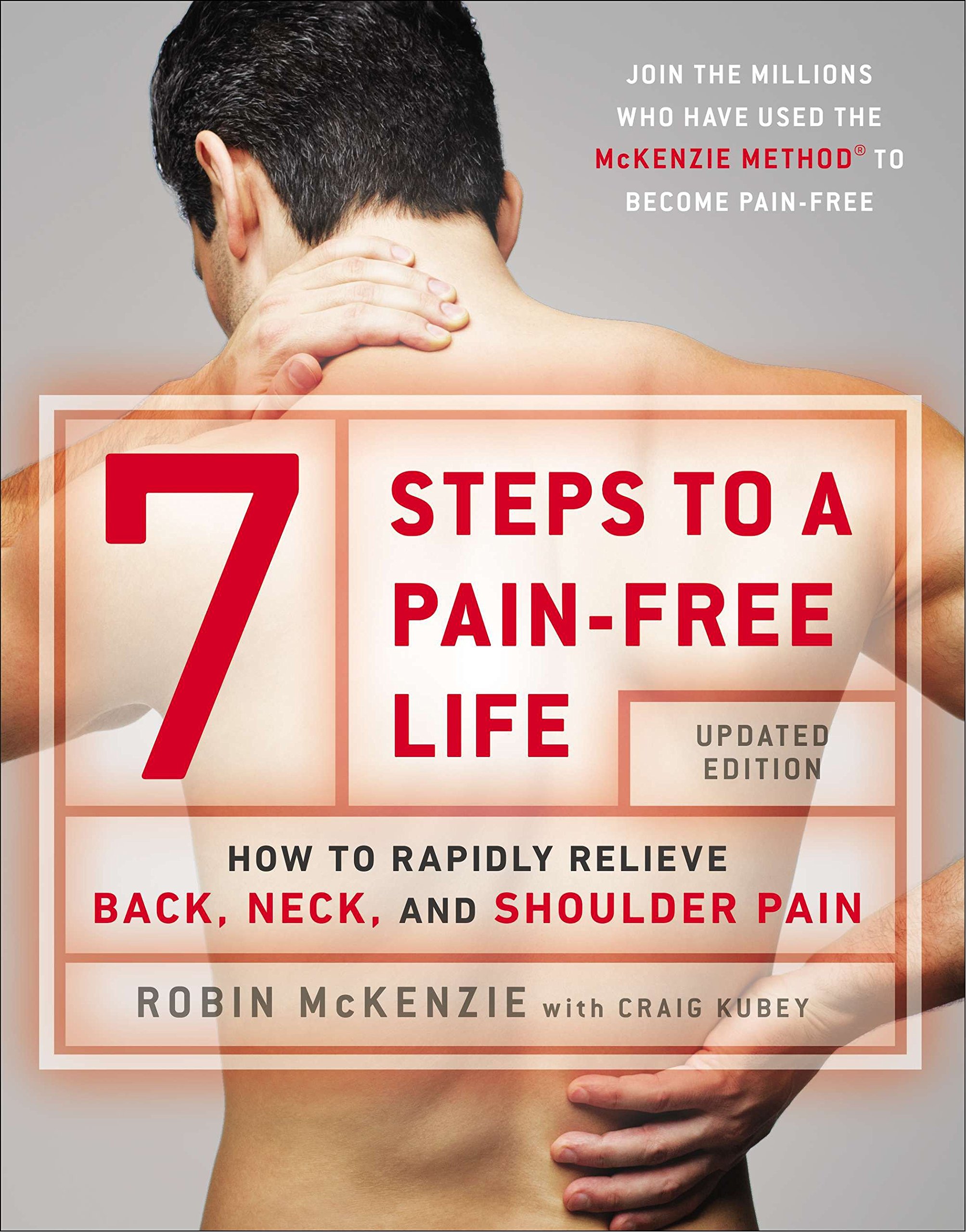
Mô tả sản phẩm
Product Description
A fully revised and updated edition of the program that’s sold more than 5.5 million copies worldwide—plus a new chapter addressing shoulder pain
Since the McKenzie Method was first developed in the 1960s, millions of people have successfully used it to free themselves from chronic back and neck pain. Now, Robin McKenzie has updated his innovative program and added a new chapter on relieving shoulder pain. In 7 Steps to a Pain-Free Life, you’ll learn:
· Common causes of lower back, neck pain and shoulder pain
· The vital role discs play in back and neck health
· Easy exercises that alleviate pain immediately
Considered the treatment of choice by health care professionals throughout the world, 7 Steps to a Pain-Free Life will help you find permanent relief from back, neck, and shoulder pain.
Review
“Patients who have learned to use McKenzie’s exercises assert for the first time that they could effectively manage–or banish–their own pain.”—"Dear Abby"
“A fantastic guidebook for people with back or neck pain.”—Dean Edell, M.D., author of Healing Back Pain Naturally
“I think Robin McKenzie’s work is wonderful.”—Art Brownstein, M.D., author of Healing Back Pain Naturally
“The McKenzie Method has become a keystone for back and neck care, and this book is an invaluable tool for better health."—HealthNewsDigest.com
About the Author
ROBIN MCKENZIE was an internationally acclaimed physical therapist, who spent 40 years perfecting the McKenzie Method, now the keystone for back and neck care around the world. He died in 2013.
CRAIG KUBEY is the author of seven previous books. He lives in Davis, California.
Excerpt. © Reprinted by permission. All rights reserved.
PREFACE
THE CHANCE DISCOVERY
I practice physiotherapy in New Zealand. In the different English spoken in the United States, this means I am a physical therapist. In 1956, I was only a few years into my career when a “Mr. Smith” came into the office. He complained of pain that extended from the right side of his lower back to his right knee. It was difficult for him to stand upright. He could bend forward, but he could not bend backward. For three weeks I treated him with heat and ultrasound. These were well-accepted therapeutic techniques then and remain so now. Nevertheless, Mr. Smith did not improve at all.
Then, late on a Wednesday, Mr. Smith came in for another appointment. I greeted him and said, “Go into that treatment room, please. Undress and then lie facedown on the table, and I’ll be in to see you.”
Mr. Smith complied—to the letter. I didn’t know it, but another physiotherapist had left the therapy table at an odd angle: the front was elevated 45 degrees. Mr. Smith lay facedown on that table, his pelvis and legs horizontal, his torso sharply elevated in a position called extension.
But I got a phone call, and then another physiotherapist needed to consult me. And so five minutes passed before I could attend to Mr. Smith. I knocked on his door, walked briskly in, and then froze. To my horror, I saw Mr. Smith lying in the bizarre position just described. Not only was the position odd; in 1956 the position was considered by the medical profession to be one that would cause damage to most any patient. I thought, “My God! What has he done? Has he made his injury much worse?”
“How are you doing, Mr. Smith?” I asked gingerly.
“It’s the best I’ve been,” he replied in sunny tones. “All the pain in the leg is gone.”
I was astounded and mightily relieved, but I wanted to know more. “How’s the low back?” I inquired.
“The funny thing is, the pain is a little worse, but it’s moved from the right side over to the center.”
“How are you tolerating that pain?”
“Better. It’s better when it’s in the middle there.”
Then he stood up.
He could do this without pain!
I asked him to try carefully to bend forward and backward. As you will recall, previously he could bend forward but not backward.
Now, after those five minutes in that strange position, he suddenly could bend backward with only minor pain.
His standing up did nothing to reverse the gains he had experienced on the table: there still was no pain in his leg, and the back pain remained centralized.
I began to recover my equilibrium. “Oh, yes, that’s fine,” I said, stumbling only a little. But I wanted to be sure no damage had been done. “Could you walk around a bit?” I asked him.
Mr. Smith walked around the treatment room. He walked quite normally. I was relieved. I felt that he had improved so much that we could ask for nothing more that day.
“Well, that’s long enough for today,” I said. “Come back tomorrow and we’ll try it again.”
The next day, Mr. Smith was back. And we repeated the same “treatment.” After Mr. Smith had maintained that odd position on the table for about five minutes, all his remaining symptoms were gone.
Mr. Smith taught me about extension. Learning from his remarkable recovery, I was able to develop exercises and postural-correction techniques involving extension and, later, flexion. On the following pages I will explain all these to you. Thanks to Mr. Smith, you are probably just one book away from being well on the road to recovery.
IMPORTANT: If you have severe back or neck pain or are having your first episode of back or neck pain, do not use this book. See a physician or other health care provider.
If you are now suffering from acute lower back pain, and have previously consulted a health care provider about your back pain, skip to Chapter 7, “Instructions for People with Acute Lower Back Pain.”
Similarly, if you have acute neck pain right now, and have previously consulted a health care provider about your neck pain, skip to Chapter 14, “Instructions for People with Acute Neck Pain.”
If you have back or neck pain that troubles you but is not acute, start with Chapter 1.
ACKNOWLEDGMENTS
ROBIN MCKENZIE
To my patients who entrusted me with their care over the past forty years, I give my thanks and gratitude for teaching me all I know. I pass this on to you, the reader, and trust that you too can benefit.
CRAIG KUBEY
I am grateful to the many McKenzie-affiliated health practitioners in the United States who generously provided advice and other assistance in connection with this book. They include Dave Pleva, Vert Mooney, M.D., Ron Donelson, M.D., and McKenzie-credentialed physical therapists Todd Edelson, Gudrun Morgan, Aidan O’Connor, Mary Sheid, Gerald Stern, Mary Stern, and Mark Werneke. Thanks also to Stacey Lyon of the McKenzie Institute U.S.A., who helped to put me in touch with the preceding physical therapists. I also thank Alan Kubey for computer assistance and Karen Kubey for photography; I thank them as well as Maki Kubey and Elizabeth Kubey for putting up with my work on this book.
ALL OF US
We thank our literary agency, RLR Associates (Scott Gould, Jonathan Diamond, Lisa Dicker, Jennifer Unter, Manuela Barbuiani, Gretchen Topping, Jason White, et al.), for its diligent work on this project. Further, we express our appreciation to the editorial, production, and publicity people at Dutton (beginning with editor in chief Brian Tart; his assistant, Kara Howland; and copyeditor John Paine) for their extensive efforts to meet the extraordinary demands of the project that produced this book. At Plume, we’d like to thank the publisher of this new, dramatically expanded edition, editor in chief Phil Budnick, as well as Matthew Daddona, Jaya Miceli, Clare Ferraro, Norina Frabotta, and Katie Hurley. We also thank Jan McKenzie, former general manager of Spinal Publications New Zealand Ltd, who handled the New Zealand administrative side of producing the original edition with extraordinary intellect, effort, diligence, diplomacy, and humor. For this new edition, we thank Rachel Mason, Jan’s successor as general manager, who was enormously smart, quick, and helpful. We further acknowledge the precise and thorough work of previous general manager Jenny Bertelsen.
And we must mention our other friends in New Zealand:
We thank Stephen May, Rob Hughes, Ezequiel Gherscovici, Kate Allison, Carole Sweney, Rowley Watson, and Sue Lord for assistance with early work on the shoulder section. Regarding photographs in the book, we also thank our models Helen Macdonald, Brian McLean, and Gorman Ngai.
Further, we acknowledge the creative expertise and guidance provided by Rachel Mason at Spinal Publications (already thanked earlier in another connection).
We also thank Caroline Budge, Daniel Allean, Jono Smith, and istockphoto.com.
Finally, we acknowledge the thousands of patients of Robin McKenzie and his associates who unknowingly provided most of the resolutions for back, neck, and shoulder pain that are described in this book.
DEDICATIONS
Robin McKenzie’s dedication appears on page v. Craig Kubey dedicates this book to his wife, Maki.
INTRODUCTION TO THE FIRST EDITION
Introductions to important books are usually written by experts or celebrities. Or, even better, by experts who are celebrities. But I am neither an expert nor a celebrity. I am an attorney who gave up a public service legal career to become a writer. But most important to you, the reader, I am a beneficiary of the McKenzie Method. And I want you to be a beneficiary too.
As you read these words, it is likely (because you chose to pick up this book) that you have back pain or neck pain. I’ve been there. The main reason I’m not there right now is Robin McKenzie.
I have had plenty of good luck in my life and plenty of bad, but I have had the astonishingly bad luck to get not just one whiplash injury caused by a rear-end auto collision, but three. I have also had the more common experience of developing lower back pain during my forties.
Because there are more back patients than neck patients, let’s start with the back. For years I had occasional minor, very tolerable lower back pain for no reason known to me. But I’m a runner: track and cross-country in high school, track at the University of California, Berkeley. One day on a family trip to Santa Cruz, California, I went for a short run in some rolling hills. No back pain during the run.
But when I stopped, I had back pain that was severe. My family was a mile away, and it was a painful struggle to walk back to them. Back home, the pain was even worse. I remember one day when my wife and I were downtown and the car was a half block away. I asked her to go to the car and pick me up: the back pain was bad enough that I didn’t even want to walk that half block.
But having already benefited from the McKenzie exercises for the neck, I read the McKenzie exercises for the back. I focused on Back Exercise 3, Extension in Lying. Immediately, the back pain was better. In a few days it was so minor that it was of no concern to me.
I also learned that I was wrong in my analysis of what had happened. People who run without pain but find their backs hurting immediately afterward blame the running. Same thing with other sports. But McKenzie says—and my experience has borne this out—that typically the problem is not the exercise but what one does afterward. My run had been short, but it had been in hills and at a fairly rapid pace. So when I finished, I was out of breath, and I bent over, hands on knees, just as so many runners and other athletes do after so many types of exercise. This was where I made my mistake. Every indication is that if I had maintained a good posture right after the run, the back symptoms never would have arisen.
Now to all those whiplash injuries. The first one occurred in 1976. I was stopped at a stop sign and my car was struck by a big Cadillac. I was a member of an early health maintenance organization, and right after my injury, there was no way that HMO would let me see an orthopedist. I saw my family doctor there, but after several weeks my symptoms hadn’t gotten much better. So without asking for a referral, I made an appointment with an orthopedist. He had eight patients an hour, and he spent most of our short time together expressing his astonishment that I had gotten to see him at all.
In search of relief, I eventually saw seven doctors: one primary care physician and six orthopedists. I was treated with heat, ultrasound, hands-on physical therapy, aspirin (this was before ibuprofen), Valium (as a muscle relaxant), and a hard cervical collar followed by a soft cervical collar. All these things helped some, but none helped in any dramatic way. The pain persisted for more than a year and interfered seriously with my work and social life. I think the only thing that really got rid of the persistent neck pain was the passage of time—September 1976 to January 1978. The only McKenzie I knew about then was a guy in my high school class who played the drums in a rock band.
The next rear-end auto collision came in May 1986. While I was waiting to turn left at an intersection, my car was struck by a Ford Taurus. I was in a lot of pain once again. But this time I went to just one primary care physician and one orthopedist, who referred me to a physical therapist. For months this physical therapist and his associate treated me with hands-on therapies. These two seemed to know their business much better than the physical therapist of 1976, and almost every time I left their office, I felt much better, but for only about a day.
But eventually this physical therapist introduced me to the McKenzie exercises. I gave them a try once in a while, maybe one session on one day (you’re supposed to do them about every two hours), then again some weeks later (you’re supposed to do them every day until your symptoms get better). They provided a little relief, but the physical therapist didn’t impress upon me the full value of these exercises or the importance of doing them religiously, which is to say, to do them exactly as McKenzie would have you do them, and to stick with them. Nor did he seem to recognize that certain McKenzie exercises are tailored to certain situations (such as one-sided pain, which was what I had). So my treatment remained mostly of the hands-on variety. And the symptoms again took more than a year to fully resolve.
In 1993, I had a serious flare-up of my neck condition. This was caused when, as I parked my car, I ran into a curb at moderate speed. Most people would not have been bothered by this, but because of my previous neck injuries, within fifteen minutes I had sharp pain.
But almost right away I remembered the McKenzie exercises, Neck Exercise 1, Head Retraction in Sitting, in particular. I did this exercise one time. That is, I retracted my head one time and held the position for about three seconds. The neck pain vanished all at once! In three seconds! (Years later I talked with a McKenzie-trained chiropractor, who said, “That’s great when that happens, isn’t it?” He had seen these instant cures with many patients.)
I’m not saying the McKenzie Method is ordinarily so successful that you can spend three seconds with it and be pain free. Chances are small you will be that lucky. But once in a while it’s just that powerful. And often the first session of exercises provides relief that, while not complete, is quite noticeable.
Auto collision whiplash number three happened in 1995: a Nissan pickup truck. The pain this time was not generally as severe as in the two other accidents, but it just hung on and hung on through several doctors and one physical therapist. I tried the McKenzie Neck Exercise 1 a few times, and it helped some, but not enough. The pain went on for more than a year.
Maybe I should have learned my lesson earlier, but I did not learn it until after the resolution of this third whiplash.
That 1995 auto accident was the last one. But there were countless flare-ups, generally associated with driving. In particular, if I’d strike a curb while parking, I’d have immediate pain. It usually would persist for about a day.
After one such microcollision, the pain was sharper than usual, and it was on one side. I decided to review the McKenzie exercises more carefully. I skimmed through Neck Exercises 1 through 4 and then came to Exercise 5, Side Bending of the Neck. I realized for the first time that this exercise was for the specific situation I was in: pain mostly or exclusively on one side. My pain was on the right side, probably because the pain from the 1995 accident had been there. It had gone away but left me vulnerable.
I did Exercise 5 a few times, and the pain was dramatically reduced in the very first session. I did it for one or two more sessions the same day, and it was just about gone. Soon it had entirely disappeared.
So my message is this: don’t skim, don’t be careless, don’t just glance at the exercises and make a “reasonable” attempt. There is genius in these exercises, but you must do them exactly as Robin McKenzie says. Read every word of every exercise and figure out which one or ones fit your back pain or your neck pain. Do the exercise or exercises exactly as Robin instructs you. Do it as many times as he says in each session. Do it as many times a day as he says to, if your schedule in any way permits that. And do the exercises in the right order. If Robin says to do Exercise 1, then 6, then 1, and then 2, do them in that order! This guy McKenzie has been developing these exercises since 1956, and he knows what he’s talking about.
You will know all this in your heart only once you have followed his advice (and mine here). When you find out just how right he is, it’s an emotional experience. When the pain suddenly declines or even vanishes, you feel relieved; you feel grateful. You feel like finding out how to reach McKenzie and calling him on the phone. His wisdom is seen not just in the results you get, but in your experience as you do the exercises.
Neck Exercise 2, Neck Extension in Sitting, is a great example of this. Robin says to retract your head, then tilt it back as though looking at the sky, then, with your head tilted, repeatedly turn your nose a half inch from the midline to the right and left, all the while tilting still farther back. It’s amazing to find that even though you thought you had tilted your head back all the way, you can tilt it still farther back—but only if you turn your nose a little to the right, then to the left, just as he says.
I have paid the price for not following the McKenzie exercises closely enough. No one—no doctor, no physical therapist—had told me how important it was to do the exercises exactly as Robin McKenzie would have you do them. I’ve paid the price in years of pain and hundreds of medical and physical therapy appointments, 95 percent of which I now believe were unnecessary and therefore a waste of valuable time, not to mention my insurance company’s money and my own (those co-payments).
Despite my emphasis on the exercises, it’s important to stress two other facts. One is that although McKenzie is known for “extension”—bending the back or neck to a straight position or past that position—his method is much more than that. Even his exercises in some cases involve flexion, which is the opposite of extension. The other is that a back or neck patient will do best if he or she focuses on more than the exercises. That is, the reader should understand the entire McKenzie Method, which includes not only the exercises but a brief discussion of human anatomy, and which concentrates heavily on correct posture as both a preventive and corrective means of dealing with back and neck pain.
Two additional personal points:
1. When you have back or neck pain, especially neck pain, you may feel that your painful area is too fragile to mess around with. Your instinct may be to use ice, lie down, not risk making the injury worse. If you have a legitimate medical concern here, such as a serious injury, sure, rest, see a doctor, be sure it’s safe to do the exercises. If it’s your first neck injury, Robin himself says to see a doctor before using the exercises.
But if your injury isn’t severe, just painful, try the exercises. You may be amazed to find that you probably aren’t so fragile after all. You can tolerate the exercises. You may feel very rapid relief.
2. If you don’t feel immediate relief, remember what McKenzie will tell you: sometimes relief doesn’t come right away; sometimes the exercises are painful and you are no better after a session or two or a day or two. But stick with them. You will in all likelihood benefit from your patience.
They say converts are the most impassioned believers, and I’ve been converted from hoping doctors and physical therapists can help me to realizing that with McKenzie’s exercises I can help myself. When I have a back or neck injury or a flare-up, no longer do I wait helplessly for someone to schedule me for an appointment: I read the McKenzie exercises and follow them to the letter. You can too. You should too.
Learn the McKenzie Method, learn the exercises, then do them exactly as instructed. You will very likely be completely free of pain in a surprisingly short amount of time. From one back/neck sufferer to another, I want you to know that this book may be the most effective doctor you have ever had.
—Craig Kubey
INTRODUCTION TO THE SECOND EDITION
Why is there a second edition? Two reasons. One is that the original 7 Steps to a Pain-Free Life has done phenomenally well in the United States and many other countries. Big sales, flattering reviews. For example, the book shot to number five in the world on the bestseller list at Amazon.com. The book has displayed tremendous endurance, running up big sales every year since its publication. In addition, Amazon.com named 7 Steps the sixth-best health book of the year.
The other reason for the new edition is that we now have a great deal of new information for the reader. We have updated the back and neck sections of the book. More important, we are dramatically enlarging the book by adding a big new section on self-treatment of the shoulder. This section’s six new, detailed chapters increase the size of the book by approximately 50 percent. Robin McKenzie collaborated on every one of the new chapters.
—Craig Kubey
1
YOU CAN STOP BACK AND NECK PAIN
I don’t claim to have spent years of research attempting to find a new and more effective means for treating back and neck pain. In a flash, those means found me. At least I had the presence of mind to recognize a powerful new therapy when it presented itself. And so, through the willingness of Mr. Smith to follow his physiotherapist’s advice no matter how ridiculous, I discovered the power of extension. My colleagues and I now refer to the experience with Mr. Smith as “the Chance Discovery.” With Mr. Smith and other patients, I rapidly realized that extension is often the key to prompt and effective self-treatment of back pain.
Over the span of four decades, I have continuously refined the treatment method and applied it not only to back injury and back pain but to neck injury and neck pain as well as shoulder injury and shoulder pain. Most specifically, I have identified seven powerful exercises for the back and seven more for the neck. The method, which also includes postural correction, has become known as the McKenzie Method. Medical researchers have verified the effectiveness of the method for both diagnosis and treatment. Many research articles, published in professional journals, support the method’s techniques.
The main features of the human spine are the vertebrae—small bony structures that are separated and cushioned by the discs. Distortion of the discs—changes in their shape—often causes pain in the back and neck. The exercises I have developed allow the discs to return to their normal shape. The result is that pain disappears.
The exciting thing is that sometimes the pain disappears almost instantly. In some ways, the exercises appeal to the energetic and dedicated: these exercises are for people who want to stop depending 100 percent on others—health professionals—to take care of them. But at the same time, the exercises may also appeal to the lazy.
- Mua astaxanthin uống có tốt không? Mua ở đâu? 29/10/2018
- Saffron (nhụy hoa nghệ tây) uống như thế nào cho hợp lý? 29/09/2018
- Saffron (nghệ tây) làm đẹp như thế nào? 28/09/2018
- Giải đáp những thắc mắc về viên uống sinh lý Fuji Sumo 14/09/2018
- Công dụng tuyệt vời từ tinh chất tỏi với sức khỏe 12/09/2018
- Mua collagen 82X chính hãng ở đâu? 26/07/2018
- NueGlow mua ở đâu giá chính hãng bao nhiêu? 04/07/2018
- Fucoidan Chính hãng Nhật Bản giá bao nhiêu? 18/05/2018
- Top 5 loại thuốc trị sẹo tốt nhất, hiệu quả với cả sẹo lâu năm 20/03/2018
- Footer chi tiết bài viết 09/03/2018
- Mã vạch không thể phân biệt hàng chính hãng hay hàng giả 10/05/2023
- Thuốc trắng da Ivory Caps chính hãng giá bao nhiêu? Mua ở đâu? 08/12/2022
- Nên thoa kem trắng da body vào lúc nào để đạt hiệu quả cao? 07/12/2022
- Tiêm trắng da toàn thân giá bao nhiêu? Có an toàn không? 06/12/2022
- Top 3 kem dưỡng trắng da được ưa chuộng nhất hiện nay 05/12/2022
- Uống vitamin C có trắng da không? Nên uống như thế nào? 03/12/2022
- [email protected]
- Hotline: 0909977247
- Hotline: 0908897041
- 8h - 17h Từ Thứ 2 - Thứ 7
Đăng ký nhận thông tin qua email để nhận được hàng triệu ưu đãi từ Muathuoctot.com
Tạp chí sức khỏe làm đẹp, Kem chống nắng nào tốt nhất hiện nay Thuoc giam can an toan hiện nay, thuoc collagen, thuoc Dong trung ha thao , thuoc giam can LIC, thuoc shark cartilage thuoc collagen youtheory dau ca omega 3 tot nhat, dong trung ha thao aloha cua my, kem tri seo hieu qua, C ollagen shiseido enriched, và collagen shiseido dạng viên , Collagen de happy ngăn chặn quá trình lão hóa, mua hang tren thuoc virility pills vp-rx tri roi loan cuong duong, vitamin e 400, dieu tri bang thuoc fucoidan, kem chống nhăn vùng mắt, dịch vụ giao hang nhanh nội thành, crest 3d white, fine pure collagen, nên mua collagen shiseido ở đâu, làm sáng mắt, dịch vụ cho thue kho lẻ tại tphcm, thực phẩm tăng cường sinh lý nam, thuoc prenatal bổ sung dinh dưỡng, kem đánh răng crest 3d white, hỗ trợ điều trị tim mạch, thuốc trắng da hiệu quả giúp phục hồi da. thuốc mọc tóc biotin





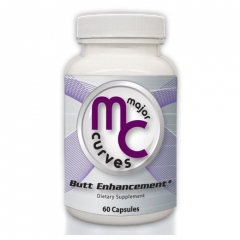
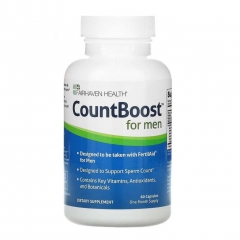

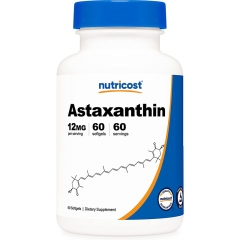
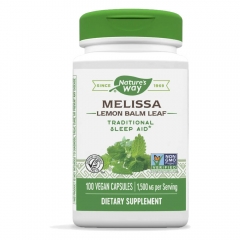
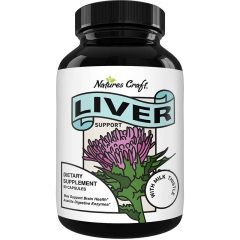

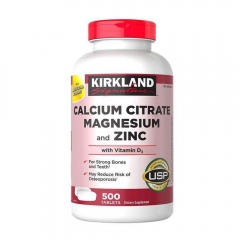

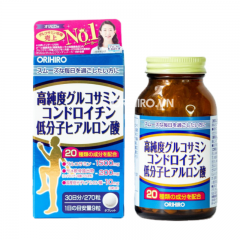
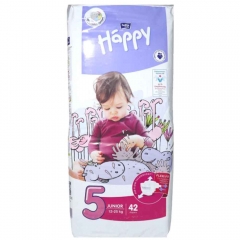
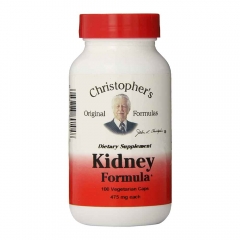






 KHUYẾN MÃI LỚN
KHUYẾN MÃI LỚN Hỗ Trợ Xương Khớp
Hỗ Trợ Xương Khớp Bổ Não & Tăng cường Trí Nhớ
Bổ Não & Tăng cường Trí Nhớ Bổ Sung Collagen & Làm Đẹp
Bổ Sung Collagen & Làm Đẹp Bổ Thận, Mát Gan & Giải Độc
Bổ Thận, Mát Gan & Giải Độc Chăm Sóc Sức khỏe Nam Giới
Chăm Sóc Sức khỏe Nam Giới Chăm Sóc Sức khỏe Nữ Giới
Chăm Sóc Sức khỏe Nữ Giới Chăm sóc Sức khỏe Trẻ Em
Chăm sóc Sức khỏe Trẻ Em Thực Phẩm Giảm Cân, Ăn Kiêng
Thực Phẩm Giảm Cân, Ăn Kiêng Bổ Sung Vitamin & Khoáng Chất
Bổ Sung Vitamin & Khoáng Chất Bổ Tim Mạch, Huyết Áp & Mỡ Máu
Bổ Tim Mạch, Huyết Áp & Mỡ Máu Bổ Mắt & Tăng cường Thị lực
Bổ Mắt & Tăng cường Thị lực Điều Trị Tai Mũi Họng
Điều Trị Tai Mũi Họng Sức Khỏe Hệ Tiêu hóa
Sức Khỏe Hệ Tiêu hóa Chăm Sóc Răng Miệng
Chăm Sóc Răng Miệng Chống Oxy Hóa & Tảo Biển.
Chống Oxy Hóa & Tảo Biển.